Landscape photography is typically thought of as images of serene mountain ranges and seascapes, but what are photographers supposed to do when these locations are unavailable or they are seeking something unique?
In his latest expert tutorial, Mark Hamblin suggests five simple ways that photographers can shoot landscapes and come away with something creative and different.
Creative landscape photography ideas: 01 Shoot local landscapes
There are a slew of good reasons for shooting a local area rather than spending the money to travel. Although photo trips away from home are a great way to discover creativity and gain valuable experience, there is certainly a fair amount of risk involved. Without local knowledge of the area and accurate weather information, many photographers return from photo trips empty-handed.
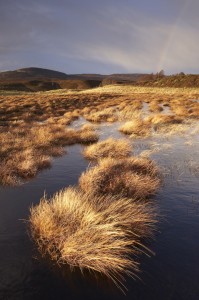
By concentrating on your local area, you stand a much better chance of being in the right place at the right time and capitalizing on good photographic conditions. Ultimately, a great deal of photography is about having an intimate knowledge of the landscapes you want to photograph. This is much easier done locally where you’ll have a better insight into things like when flowers and trees are in bloom and the best time of day to shoot.
Creative landscape photography ideas: 02 Do your pictures tell a story?
A good landscape photograph is one that has a beginning, a middle and an end, like a story. If you think of a landscape as having three components – a foreground, middle ground and background, it can help you compose your images more effectively. Not all images fall into this simplified structure of composition but many do and it’s a very good technique to ‘build’ your pictures from front to back.
By constructing your images in this way you will begin to instinctively compose your pictures so that the foreground links together with the background elements of the shot. One way to do this is to start with a strong foreground feature and then compose the shot so the eye leads from this to something of interest in the middle distance and background. Alternatively, the background may be the most important aspect of the picture, in which case look for foreground interest to compliment but not overpower it.
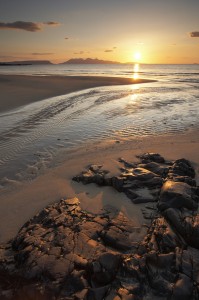
This approach to composition tends to work best when using a wide-angle lens in order to include sufficient foreground as well as the background. Be careful not to shoot too wide as this will reduce the impact of the background features by changing the perspective and making them appear much smaller.
Creative landscape photography ideas: 03 Use side-lighting to add depth
One of the best ways to add a sense of depth to your landscape images is to use side-lighting to create shadows and reveal shape and form. When starting out in photography we are often told to shoot with the sun coming from over our shoulder, but when it comes to landscape images this is not good advice,
Front lighting makes the landscape appear very flat and two-dimensional because the shadows are falling directly behind the subject and are therefore hidden from the camera. By simply reorienting the camera so that the sunlight is coming in from the side makes all the difference to the appearance of a landscape.
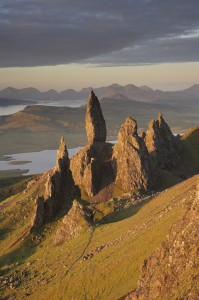
When shadows are falling across the frame they help to reveal the shape and form of features within the landscape, as well as helping to create the illusion of depth in the image.
The lower the sun’s position is in the sky, the longer the shadows will be and consequently more landscape features will be revealed. As a rule of thumb, the best time to shoot landscapes is when your own shadow is longer than your height. Avoid midday sun and try to shoot early and late in the day.
Creative landscape photography ideas: 04 Take a chance on the weather
If you want some drama in your landscape images then you’ll need to take a gamble and head out when it’s cloudy. Weather is often the critical factor when it comes to landscape photography and whilst blue skies are pleasant they won’t set the world on fire.
To capture these kinds of exciting images you have to be prepared for failure as well as the distinct possibility of getting wet. The sun may only break through for a few moments so you have to be in position with your camera ready to shoot. Shooting landscapes in inclement weather will involve a long wait and you may only be rewarded on a handful of occasions, but these images are never to be repeated moments and they will be unique and demand a second look.
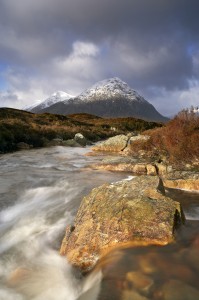
Learning to read the clouds will help plan your shoot. Look for a clearing sky on the western horizon as the sun sometimes sneaks under the clouds for just a minute or two before sunset. Windy and showery days are also very good for transient light as the clouds are moving constantly, allowing sunlight to burst through the gaps.
Creative landscape photography ideas: 05 Exclude the sky
A good sky can make all the difference to a landscape photography but if it lacks interest then don’t hesitate to cut it out of the picture. If something isn’t adding to the picture then don’t include it in the frame.
A small amount of a cloudless blue sky is acceptable but if it’s uniform pale grey than the best option is usually to exclude it altogether. Heavy overcast light may not have the same appeal as sunshine but it’s actually ideal for shooting many types of landscape images.
Woodland interiors, waterfalls and coastal scenes all work really well in overcast light and in most cases give much better results when shot in soft light rather than in bright sunshine. This is because the contrast levels are much lower when working in overcast conditions allowing detail to be retained in both dark and light areas of the picture.
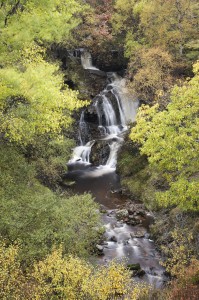
Take full advantage of shooting on overcast light by setting a long exposure to record moving water as a creative blur. You’ll get more saturated colors by fitting a polarizing filter, which will remove the surface flare from water and foliage. A polarizer will also reduce the light reaching the sensor meaning you can shoot longer exposures.
To view Mark Hamblin’s works visit his website www.markhamblin.com
[via digitalcameraworld.com]